Cleaning of intake valves with BMW walnut shell blasting tool - review
1. Why?
Modern engines are often direct injection, as this process allows for advantages in fuel consumption as compared to conventional fuel injection, as well as yielding more power with an engine of identical displacement. The N54 engine of the 335i and 135i also is a direct injection one; this means in particular that the fuel is injected directly into the combustion chamber of each cylinder and not in the intake tract. As a consequence thereof, the fuel injectors are no more placed
before the intake valve, but directly in the cylinder itself.
The disadvantage of this is that the regular bathing and therefor cleaning of the intake valves by way of the fuel that they are exposed to does not happen any more. The intake valves are only in contact with air or rather blowby gases from the crankcase breathing circuit, in which substantial quantities of fuel and oil can be found. Over time, these lead to deposits of carbonised fuel and oil in the intake tract as well as on the intake valves themselves; this is also referred to as carbonising. This is not immediately bad for the engine, but over time can have a detrimental effect on its efficiency. If the valves are heavily carbonised, they may not close properly anymore, and symptoms such as a bumpy idle, vibrations and diminished throttle response can be observed; it may also contribute to increased oil consumption.
As unfortunately this carbonising effect is an inevitable byproduct of direct injection, it cannot be prevented. The use of additives in the fuel itself is useless, as (see above) the fuel does not come into contact with the intake tract or the valves at all; the use of water/methanol injection may slow down the carbonising somewhat (depending on where the methanol is injected and provided it is not yet completely vaporised when it reaches the valves), but cannot prevent it either. A cleaning of the intake valves by using Seafoam or similar products which are injected directly into the charge pipe has been discussed extensively, but in my opinion this method is not very efficient as the carbonising is usually too persistent to be removed by this method.
2. What can one do?
In principle there exist two methods to clean the intake valves and intake tracts of the N54 engine (and any other direct injection engine). A very elaborate and consequently expensive method is to completely take off the cylinder head and to have the valves lie in a very aggressive cleaning solution for at least 48 hours, after which they have to be cleaned manually as well in order to remove any remaining carbonising. I received a quote for this method of 3500 EUR. :wacko:
A modified (and much less labour intensive) variant of this method is to do the cleaning by way of a cleaning solution without taking off the cylinder head. However, this has the disadvantage that you can typically only clean one intake tract at the same time, as in order to avoid for the cleaning fluid to enter the combustion chamber the valve has to be tightly shut, and usually only one valve of the six that we have is completely shut at the same time. As depending on the amount of carbonising the valve and intake tract have to be left to simmer in the cleaning solution for 24-48 hours, this can take quite a long time during which you can't drive the car. In addition, as even the most aggressive cleaning solution is usually not sufficient to remove the carbonising completely, you have to do some manual cleaning with a brush as well. Not much fun!
The method I chose in the end and that I'm going to describe here is the cleaning of the intake tract and valve of each cylinder with a blasting tool. This blasting tool is using pressurised air (usually 6-8 bar) to inject fine walnut shell granules into the intake tract. These granules hit the carbonising at high speed and thus remove it entirely, while at the same time this material is soft enough not to damage the metal of the intake tract and the valves. That is also the reason why no other material should be used for this method. The advantages of this method are obvious: On the one hand, a labour extensive removal of the cylinder head is unnecessary, on the other hand the method is very fast (only a few seconds per intake tract are necessary) and effective.
3. Where do you do something like this?
It would seem that this walnut shell blasting method is more or less common in the US, and that besides BMW dealerships also independent garages offer such a service. I initially assumed that the situation would be identical in Europe – not so! In a radius of around 100km only one BMW dealership (Kontz in Luxembourg) offered this service, however at a prohibitive price of 1000-1500 EUR. As I knew that the tool that BMW uses to do this only costs 650 EUR, it was out of the question to have it done there.
As a consequence, I looked up the part number of this "Strahlmittelgerät" which was conveniently provided by a forum member in another thread (81 29 2 208 034) and ordered it at an independent reseller (as BMW itself refused to let me buy it from the directly). In principle, I believe that any other blasting tool can also be used for this method, but I stuck to the same tool used by BMW as I knew (i) I couldn't do anything wrong with this and (ii) the practical adapter for the intake tracts of my engine should be delivered together with the tool itself.
Please note: Although this blasting tool has a BMW part number, it is not manufactured by BMW at all, but rather by a German company called TKR Group (
website TKR Group); there it is called "Granulat-Punktstrahlgerät PG 5-8".
I ordered the
blasting material / walnut shells with
the company ESSKA; I paid for a 25 liter-bag of walnut shell granules (0.45 to 1mm) 65,45 EUR including VAT and shipping.
As I do not pretend to have any mechanical skills myself, I outsourced the whole operation to two friends of mine, one of whom is a professional mechanic. Besides the above mentioned blasting tool you will also need (i) a compressor for the compressed air (6-8 bar, the bigger the capacity the better) and a strong vacuum cleaner which sucks out the granules that are used to clean the valves out of the intake tract during the cleaning process.
4. So how does that work now?
Being a German product, of course you get an extensive and detailed user manual together with the blasting tool, in several languages. If you want to have a look at that manual, here's the link for the English version:
BMW blasting tool - manual (engl.)
When unpacking the blasting tool we encountered our first problem: The BMW specific adaptor I mentioned above and by way of which the blasting tool is tightly connected to the intake tract so that no blasting material can come out into the engine bay was not included!:cursing:

: Of course I complained about this later on to the seller, but at the time there was not much we could do about it. In the meantime I have ordered and received the adaptor separately, it has the BMW part no. 81 29 2 208 037 and costs around 30 EUR). Therefore, improvisation was the word of the day! In the end we used a rubber tube that we had lying around, cut a very small hole into it (for the blasting wand) and connected it by tape to the vacuum cleaner on the one end and to the intake tract on the other. Didn't look so professional but worked quite well in the end! But one thing after the other.
a) Removal of the intake manifold
Firstly, the intake manifold (which is by the way made by Mahle as indicated on it) has to be removed so that the six intake tracts can be accessed. For this, the engine cover must be removed and a number of intake tubes have to be disconnected (such as my STETT Cold Air Intake), as otherwise there is not enough space to pull off the manifold. That's how it looks:
Engine cover removed
 Look onto the manifold with some intake tubes being already disconnected
Look onto the manifold with some intake tubes being already disconnected
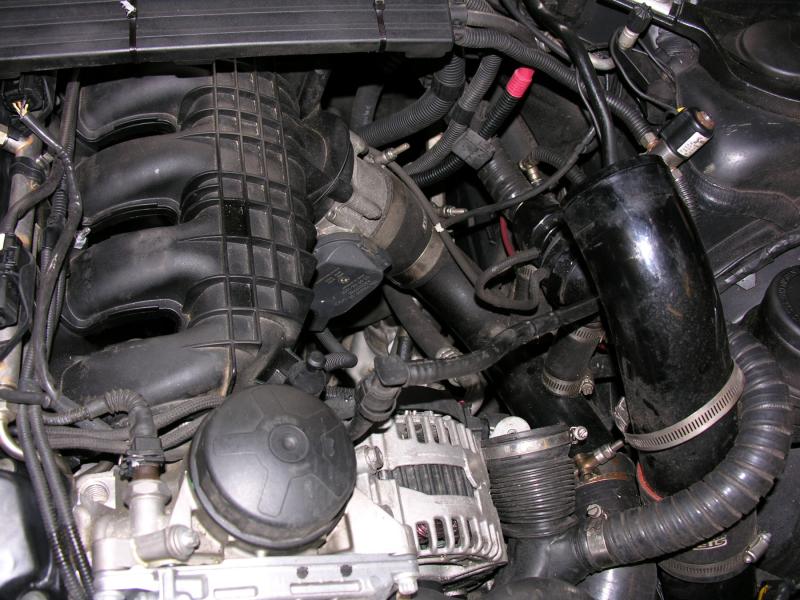 Look onto the intake tracts after removal of manifold
Look onto the intake tracts after removal of manifold
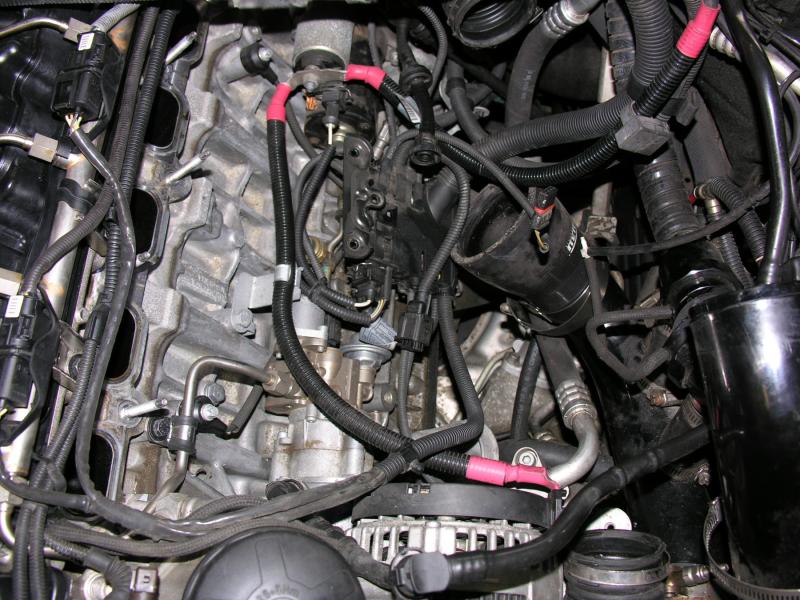 Direct look onto the intake tracts
Direct look onto the intake tracts
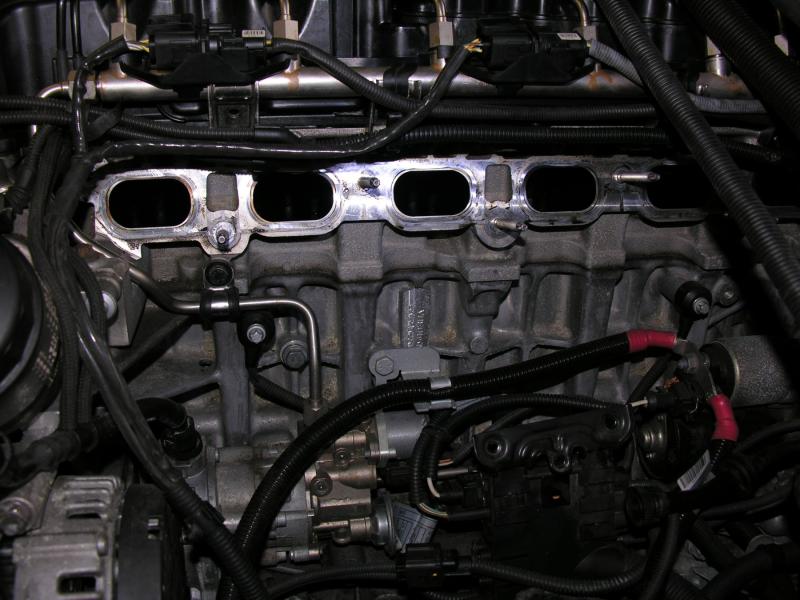 b) Inspection of the amount of carbonising of the intake valves
b) Inspection of the amount of carbonising of the intake valves
After the manifold has been removed, you have an unobstructed view onto the intake tracts and the valves. In view of the mileage of my car (77.000km = 48.000 miles) they didn't look that bad actually, although you can clearly see that there is quite a bit of carbonising. The car of a friend with far less mileage actually looked far worse (maybe because he didn't use methanol injection). Some photos to illustrate this:
Intake tract of the first cylinder (1)
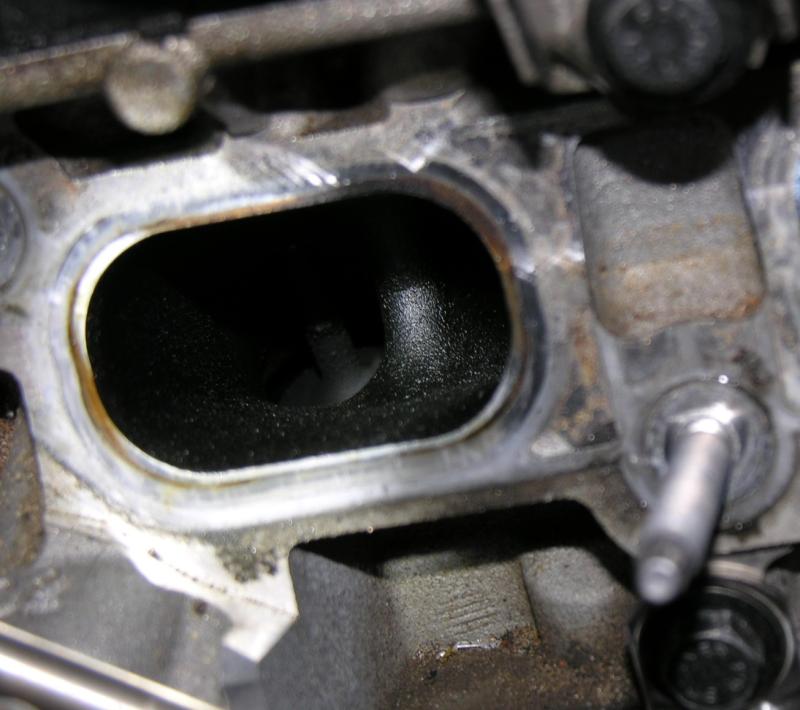 Intake tract of the first cylinder (2)
Intake tract of the first cylinder (2)
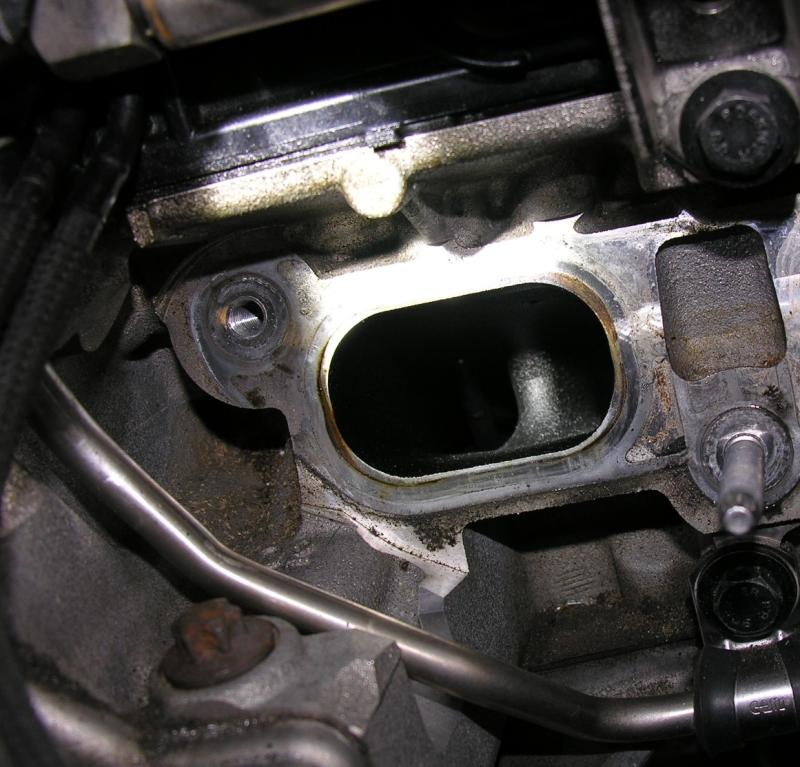 Intake tract of the second cylinder (1)
Intake tract of the second cylinder (1)
 Intake tract of the secondcylinder (2)
Intake tract of the secondcylinder (2)
 c) Covering of the engine bay and of the intake tracts that are not cleand
c) Covering of the engine bay and of the intake tracts that are not cleand
As we unfortunately did not dispose of the specific BMW adaptor, we had to improvise a bit more and, in order to avoid any spilling of walnut shell material into the engine bay, we covered the engine bay with a plastic sheet. In addition, we taped all intake tracts that were not being cleaned shut, as well as all open tubes of the intake itself. I believe that even if some of the walnut shells were to get into the cylinder, this wouldn't be bad for the engine as they are so soft that they would simply burn off; but we wanted to avoid any risk. A few photos:
Intake tracts taped shut
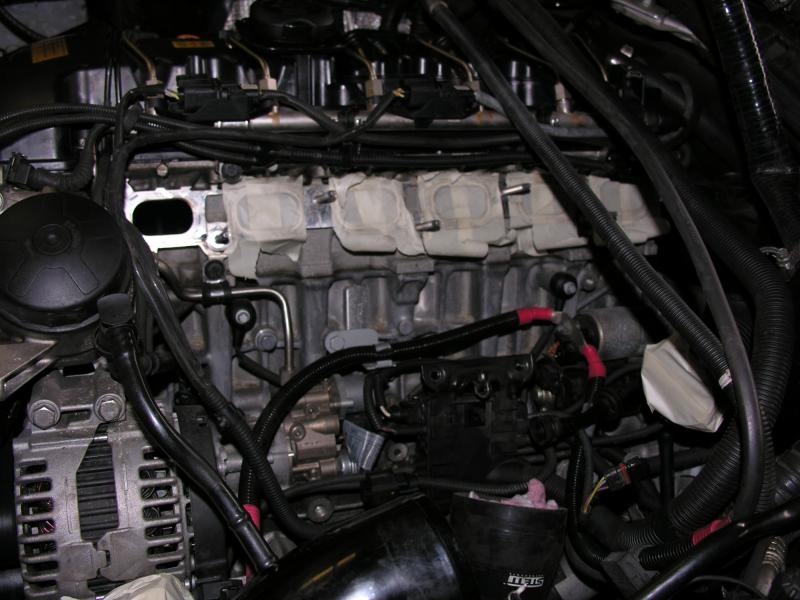 Engine bay covered with plastic sheet
Engine bay covered with plastic sheet
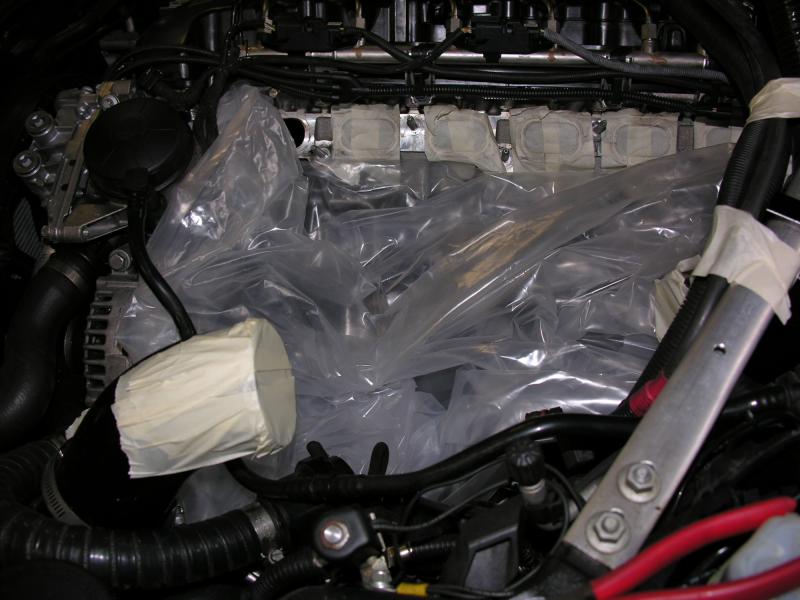 d) Use of the blasting tool
d) Use of the blasting tool
First a phot of the blasting tool itself so that you know how it looks:
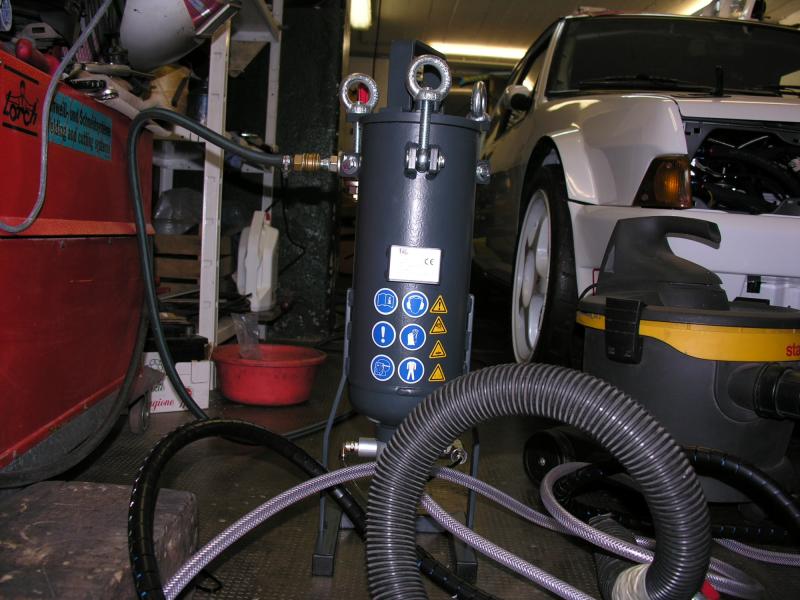
And this would have been the adapter if it had been included in the package::
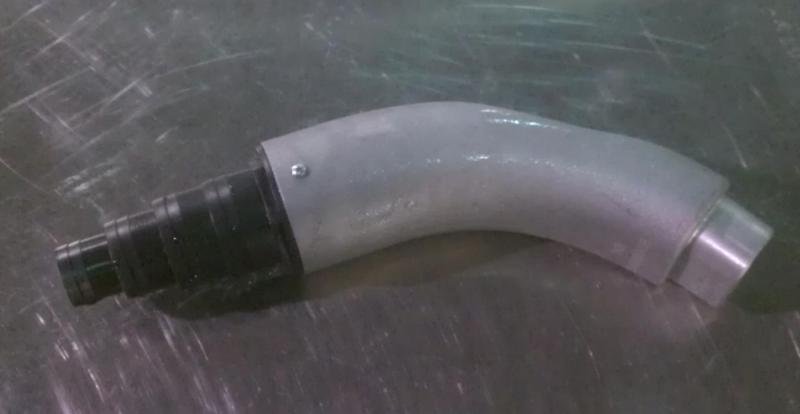
The different steps for using the blasting tool are actually rather easy. Here are the key points::
- Connect the blasting tool to the pressured air
- Fill in the walnut shell granules into the tool (you can get about 5 liters into it)
- Connect the (improvised) adaptor with the intake tract that is to be cleaned
- Put the blasting tool under pressure (red handle) and start the vacuum cleaner
- Blast away! (those cylon buggers!) ca. 5-8 seconds are sufficient
- Blast out the intake tract that has been cleaned with pressured air only to remove any remaining granules + clean also with the vacuum cleaner
- Switch off blasting tool + vacuum cleaner; verify filling level of the granule container
- Clean out intake tract with brake cleaner
- Use starter to get the next valve to close
- Repeat everything for the other intake tracts + valves
And that's how the intake tract and valve looks after being cleaned::
Cleaned intake tract + valve (1)
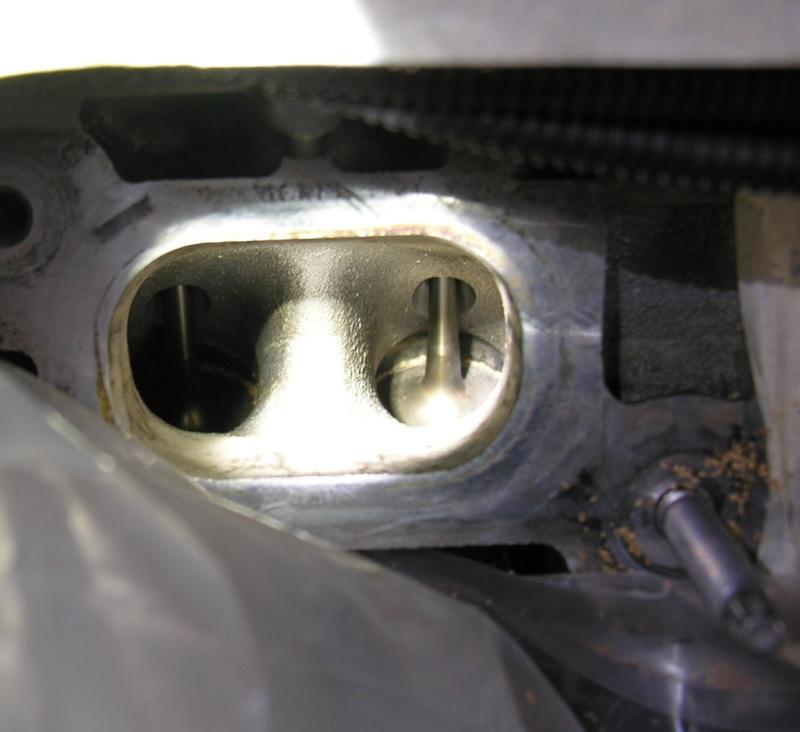 Cleaned intake tract + valve (2)
Cleaned intake tract + valve (2)
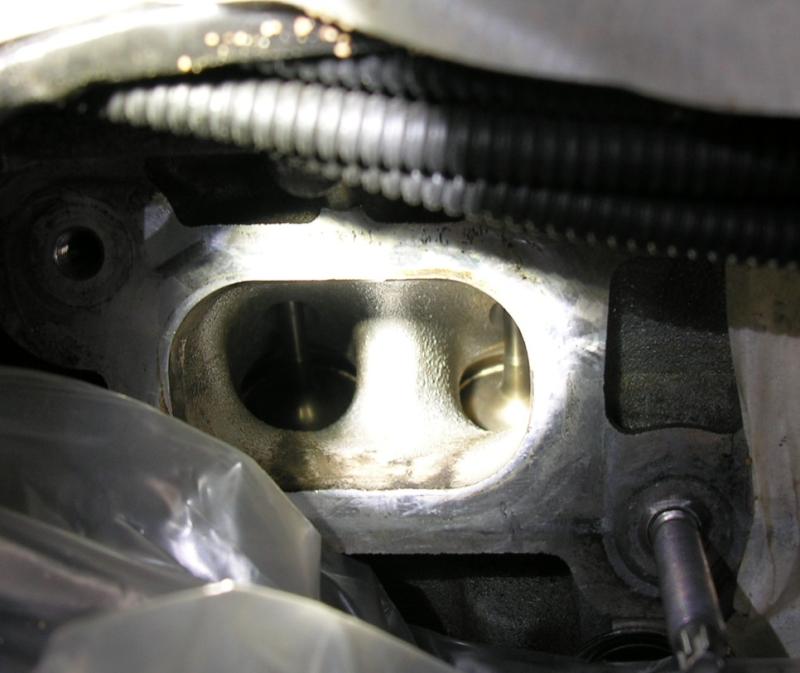 Cleaned intake tract + valve (3)
Cleaned intake tract + valve (3)

I think that the photos speak for themselves – everything looks spick and span, just like new. We were very positively surprised at the efficiency of this cleaning method and would not have imagined that only a few seconds of using the blasting tool could have such a resounding effect. Perfect, really!
The consumption of walnut shell material is comparatively high, which is due to the high pressure it is injected into the intake tract. A small bag of 5 liters of material was delivered together with the blasting tool, but this is only sufficient for cleaning one or two of the valves. In total, we used this bag as well as roughly 1/3 of the 25 liter bag, I would say around 12 liters in total.
5. What else is there to do? How long does all this take?
Well, obviously you need to put everything together after the cleaning procedure, just in reverse. I don't think I need to describe this again…!
In total the whole procedure including removal of the manifold took about 3 hours. However, two people worked together, so that I think for one person it would take slightly longer, in particular the removal of the manifold and disconnecting of all the intake tubes and stuff. On the other hand it would have gone faster had we already disposed of the correct adaptor.
6. Do you feel anything while driving?
I suppose that this is the question that interests everyone (me included!) most. To make it short: Yes! You feel a difference. In my case it certainly wasn't night and day after the cleaning, but the throttle response of my car was noticeably better (without hesitation), and the idle is now as smooth as it was when I bought the car three years ago. Excellent!

Just what I had expected. Whether this also makes a difference in engine power is hard to say – maybe a little bit, but with a car that already has 400whp and more I don't think I would notice that.
I can recommend this without any reservation for any car with a mileage of more than 75.000km or 50.000 miles; in my opinion this should be a normal, regular maintenance to be done by BMW. The latter however is of the opinion that this only needs to be done if there are any error codes or tangible problems. If you asked me it would be better not to wait until then, in particular as the effort is not very substantial as long as you have the right tools.
7. Can I have that done too?
When I bought the blasting tool, I knew that I wouldn't need it for quite a while after having cleaned my own car. In order not to have it lying around uselessly in my cellar and to amortise my investment, I intend to offer this also to others if there is enough interest and provided they drive a
335i,
135i or
1M respectively
Alpina B3 (S) Biturbo (no other engines for now due to possible additional complexities for example with the removal of the manifold etc. that are unpredictable). I wouldn't do that myself of course (see above), but my friend the mechanic would do that, using my blasting tool. This is of course not really useful for you US guys
as I am located in Europe, but I mention it nevertheless in case any of you are in Germany or somewhere near me (Luxembourg). Please note I don't do this on a commercial basis at all, it's just something I would do for other car enthusiasts like myself that are close to where I live, and have the same difficulty in finding anyone doing this here (for an affordable price).
I hope this review was helpful for those who intend to do the same, and provide some guidance and information on this particular method.
Alpina_B3_Lux